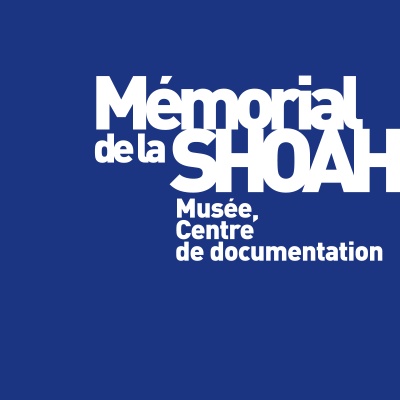History of the CDJC
Created in clandestinity in France to document the persecution of Jews in France during the Second World War, the Centre de documentation juive contemporaine (CDJC) is one of the essential components of the Mémorial de la Shoah.
The CDJC, Centre for Contemporary Jewish Documentation constitutes the matrix of the Shoah Memorial. The desire to document the genocide of the European Jews that animated the founders of the CDJC during the war is today one of the main missions of the Shoah Memorial which is both a museum, a documentation center and a Memorial.
The creation of the CDJC is linked to a name, that of Isaac Schneersohn, an industrialist who clandestinely gathered on 28 April 1943 in his apartment in Grenoble about forty activists and leaders of the Jewish community to decide on the creation of an archive fund.
The objective is to set up a structure that would gather evidence of the persecution of the Jews in order to testify and seek justice at the end of the war. Objective achieved a few years later during the Nuremberg trial where archived documents will be produced by the CDJC.
The weight of archives at the Nuremberg trial, at the Barbie trial
The archiving work undertaken by the group after the meeting in Grenoble was stopped by the German invasion in September 1943 of the area until then occupied by the Italians. It resumes at the time of the fighting for the Liberation when Isaac Schneersohn and his team join Paris for the archival funds emanating from Vichy and the Nazi occupier.
The group of the CDJC puts the hand on the precious archives of the General Commissariat for Jewish Questions, CGQJ, the German embassy in Paris, of the General Staff, of the general delegation of the Vichy Government and especially on those of the anti-serviceJewish of the Gestapo, one of the few recovered in Europe.
At the end of the war, the Documentation Centre created its own publishing house and in 1946, it published the first history magazine on the Shoah, Le Monde Juif.
At the Nuremberg trial, the French State relied on the archives of the CDJC to support its argument. Recognized for its action, the Documentation Center is then authorized to draw from the archives of this first major international trial.
In another historic trial, that of Klaus Barbie in 1987, it is again the CDJC that provides a major piece of evidence for the indictment of the head of the Gestapo of Lyon, for crimes against humanity: the telex of Izieu.
Documentation and places of memory
Isaac Schneersohn decided in 1950 to add a new dimension to the CDJC by creating a Memorial-tomb to honor the victims of the Shoah. The first stone was laid in 1953. Ashes from the extermination camps and the Warsaw ghetto were solemnly deposited on 24 February 1957 in the crypt of the Memorial.
In 2005, after expansion work, the new Shoah Memorial was inaugurated. Its extension allowed to complete the work started by Isaac Schneersohn by enhancing the Documentation Center, by offering more space for researchers in the reading rooms, by creating new places of mediation like the museum, the exhibitions, the auditorium and the multimedia space. At the Memorial tomb of the 1950s came to answer 'the Wall of names' where the names of all the Jews deported from France were engraved.
